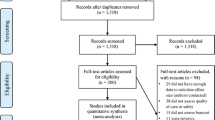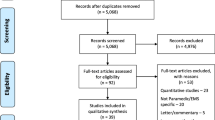Abstract
Awareness of second victim syndrome and available support systems in South Asia is quite limited. We conducted this survey to assess its prevalence and impact among the surgeons from South Asia. A multiple choice pattern web-based cross-sectional Google forms questionnaire was developed which focused on demographics of respondent, prevalence, impact (physical, personal and professional), available coping mechanisms, gap in support systems, and future suggestions for dealing with “second victim” syndrome. Answers were sought from surgeons of all surgical specialties from South Asia. A total of 658 surgeons responded to the survey, 91.03% (n = 599) reported having experienced the “second victim” syndrome. Majority (54.3%) of respondents was from India; surgeons from 8 other countries also responded to the survey. Prevalence of “second victim” syndrome was found similar among the two genders, different experience groups, and different specialties (p > 0.05). A varied set of physical, psychological, and professional impacts were noted; however, any structured institute-based support system was lacking and victims sought help from colleagues. Development of a structured “crisis plans” providing emotional, psychological, and legal support, minimizing the trauma, and guiding the second victim through the recovery process is the need of the hour.

Similar content being viewed by others
References
Wu AW (2000) Medical error: the second victim. The doctor who makes the mistake needs help too. BMJ. 320(7237):726–727. https://doi.org/10.1136/bmj.320.7237.726
Nayar RC, Pandit RV, Gopinath KS (2018) The second victim: ignored in the Indian perspective. Indian J Surg Oncol 9(1):114–115. https://doi.org/10.1007/s13193-017-0701-y
https://www.indiatoday.in/world/story/medical-mistakes-cause-2-6-million-deaths-yearly-who-1599019-2019-09-14. Accessed on 9th Nov 2020.
Makary MA, Daniel M (2016) Medical error-the third leading cause of death in the US. BMJ. 353:i2139. https://doi.org/10.1136/bmj.i2139
Ullström S, Andreen Sachs M, Hansson J, Ovretveit J, Brommels M (2014) Suffering in silence: a qualitative study of second victims of adverse events. BMJ Qual Saf 23(4):325–331. https://doi.org/10.1136/bmjqs-2013-002035
Busch IM, Moretti F, Purgato M, Barbui C, Wu AW, Rimondini M (2020) Psychological and psychosomatic symptoms of second victims of adverse events: a systematic review and meta-analysis. J Patient Saf 16(2):e61–e74. https://doi.org/10.1097/PTS.0000000000000589
Serou N, Sahota L, Husband AK, Forrest SP, Moorthy K, Vincent C, Slight RD, Slight SP (2017) Systematic review of psychological, emotional and behavioural impacts of surgical incidents on operating theatre staff. BJS Open 1(4):106–113. https://doi.org/10.1002/bjs5.21
Luu S, Patel P, St-Martin L, Leung AS, Regehr G, Murnaghan ML, Gallinger S, Moulton CA (2012) Waking up the next morning: surgeons’ emotional reactions to adverse events. Med Educ 46(12):1179–1188. https://doi.org/10.1111/medu.12058
Han K, Bohnen JD, Peponis T, Martinez M, Nandan A, Yeh DD, Lee J, Demoya M, Velmahos G, Kaafarani HMA (2017) The surgeon as the second victim? Results of the Boston intraoperative adverse events surgeons’ attitude (BISA) study. J Am Coll Surg 224(6):1048–1056. https://doi.org/10.1016/j.jamcollsurg.2016.12.039
Patel AM, Ingalls NK, Mansour MA, Sherman S, Davis AT, Chung MH (2010) Collateral damage: the effect of patient complications on the surgeon’s psyche. Surgery. 148(4):824–828; discussion 828-30. https://doi.org/10.1016/j.surg.2010.07.024
Pinto A, Faiz O, Bicknell C, Vincent C (2013) Surgical complications and their implications for surgeons’ well-being. Br J Surg 100(13):1748–1755. https://doi.org/10.1002/bjs.9308
Van Gerven E, Bruyneel L, Panella M, Euwema M, Sermeus W, Vanhaecht K (2016) Psychological impact and recovery after involvement in a patient safety incident: a repeated measures analysis. BMJ Open 6(8):e011403. https://doi.org/10.1136/bmjopen-2016-011403
Balogun JA, Bramall AN, Bernstein M (2015) How surgical trainees handle catastrophic errors: a qualitative study. J Surg Educ 72(6):1179–1184. https://doi.org/10.1016/j.jsurg.2015.05.003
Mira JJ, Carrillo I, Lorenzo S, Ferrús L, Silvestre C, Pérez-Pérez P, Olivera G, Iglesias F, Zavala E, Maderuelo-Fernández JÁ, Vitaller J, Astier P, Research Group on Second and Third Victims (2015) The aftermath of adverse events in Spanish primary care and hospital health professionals. BMC Health Serv Res 15:151. https://doi.org/10.1186/s12913-015-0790-7
Stehman CR, Testo Z, Gershaw RS, Kellogg AR (2019) Burnout, drop out, suicide: physician loss in emergency medicine Part I. West J Emerg Med 20(3):485–494. https://doi.org/10.5811/westjem.2019.4.40970
Shanafelt TD, Balch CM, Bechamps G, Russell T, Dyrbye L, Satele D, Collicott P, Novotny PJ, Sloan J, Freischlag J (2010) Burnout and medical errors among American surgeons. Ann Surg 251(6):995–1000. https://doi.org/10.1097/SLA.0b013e3181bfdab3
Scott SD, Hirschinger LE, Cox KR, McCoig M, Brandt J, Hall LW (2009) The natural history of recovery for the healthcare provider “second victim” after adverse patient events. Qual Saf Health Care 18(5):325–330. https://doi.org/10.1136/qshc.2009.032870
Russ MJ (2017) Correlates of the third victim phenomenon. Psychiatr Q 88(4):917–920. https://doi.org/10.1007/s11126-017-9511-1
Ozeke O, Ozeke V, Coskun O, Budakoglu II (2019) Second victims in health care: current perspectives. Adv Med Educ Pract 10:593–603. https://doi.org/10.2147/AMEP.S185912
Bell SK, Moorman DW, Delbanco T (2010) Improving the patient, family, and clinician experience after harmful events: the “when things go wrong” curriculum. Acad Med 85(6):1010–1017. https://doi.org/10.1097/ACM.0b013e3181dbedd7
Mello MM, Roche S, Greenberg Y, Folcarelli PH, Van Niel MB, Kachalia A (2020) Ensuring successful implementation of communication-and-resolution programmes. BMJ Qual Saf 29(11):895–904. https://doi.org/10.1136/bmjqs-2019-010296
Lambert BL, Centomani NM, Smith KM, Helmchen LA, Bhaumik DK, Jalundhwala YJ, TB MD (2016) The “seven pillars” response to patient safety incidents: effects on medical liability processes and outcomes. Health Serv Res 3(Suppl 3):2491–2515. https://doi.org/10.1111/1475-6773.12548
Denham CR (2007) Trust: the 5 rights of the second victim. J Patient Saf 3(2):107–119. https://doi.org/10.1097/01.jps.0000236917.02321.fd
Hu YY, Fix ML, Hevelone ND, Lipsitz SR, Greenberg CC, Weissman JS, Shapiro J (2012) Physicians’ needs in coping with emotional stressors: the case for peer support. Arch Surg 147(3):212–217. https://doi.org/10.1001/archsurg.2011.312
Gallagher TH, Waterman AD, Ebers AG, Fraser VJ, Levinson W (2003) Patients’ and physicians’ attitudes regarding the disclosure of medical errors. JAMA. 289(8):1001–1007. https://doi.org/10.1001/jama.289.8.1001
Lee W, Pyo J, Jang SG, Choi JE, Ock M (2019) Experiences and responses of second victims of patient safety incidents in Korea: a qualitative study. BMC Health Serv Res 19(1):100. https://doi.org/10.1186/s12913-019-3936-1
Downey N (2019) Ever made a mistake? The role of aviation-style error management in healthcare. J Surg Simul 6:27–30. https://doi.org/10.1102/2051-7726.2019.0005
de Wit ME, Marks CM, Natterman JP, Wu AW (2013) Supporting second victims of patient safety events: shouldn’t these communications be covered by legal privilege? J Law Med Ethics 41(4):852–858. https://doi.org/10.1111/jlme.12095
Clarkson MD, Haskell H, Hemmelgarn C, Skolnik PJ (2019) Abandon the term “second victim”. BMJ. 364:l1233. https://doi.org/10.1136/bmj.l1233
Author information
Authors and Affiliations
Corresponding author
Ethics declarations
Conflict of Interest
Nil.
Additional information
Publisher’s Note
Springer Nature remains neutral with regard to jurisdictional claims in published maps and institutional affiliations.
Rights and permissions
About this article
Cite this article
Jain, G., Sharma, D., Agarwal, P. et al. “Second Victim” Syndrome Among the Surgeons from South Asia. Indian J Surg 84, 40–46 (2022). https://doi.org/10.1007/s12262-021-02793-3
Received:
Accepted:
Published:
Issue Date:
DOI: https://doi.org/10.1007/s12262-021-02793-3




